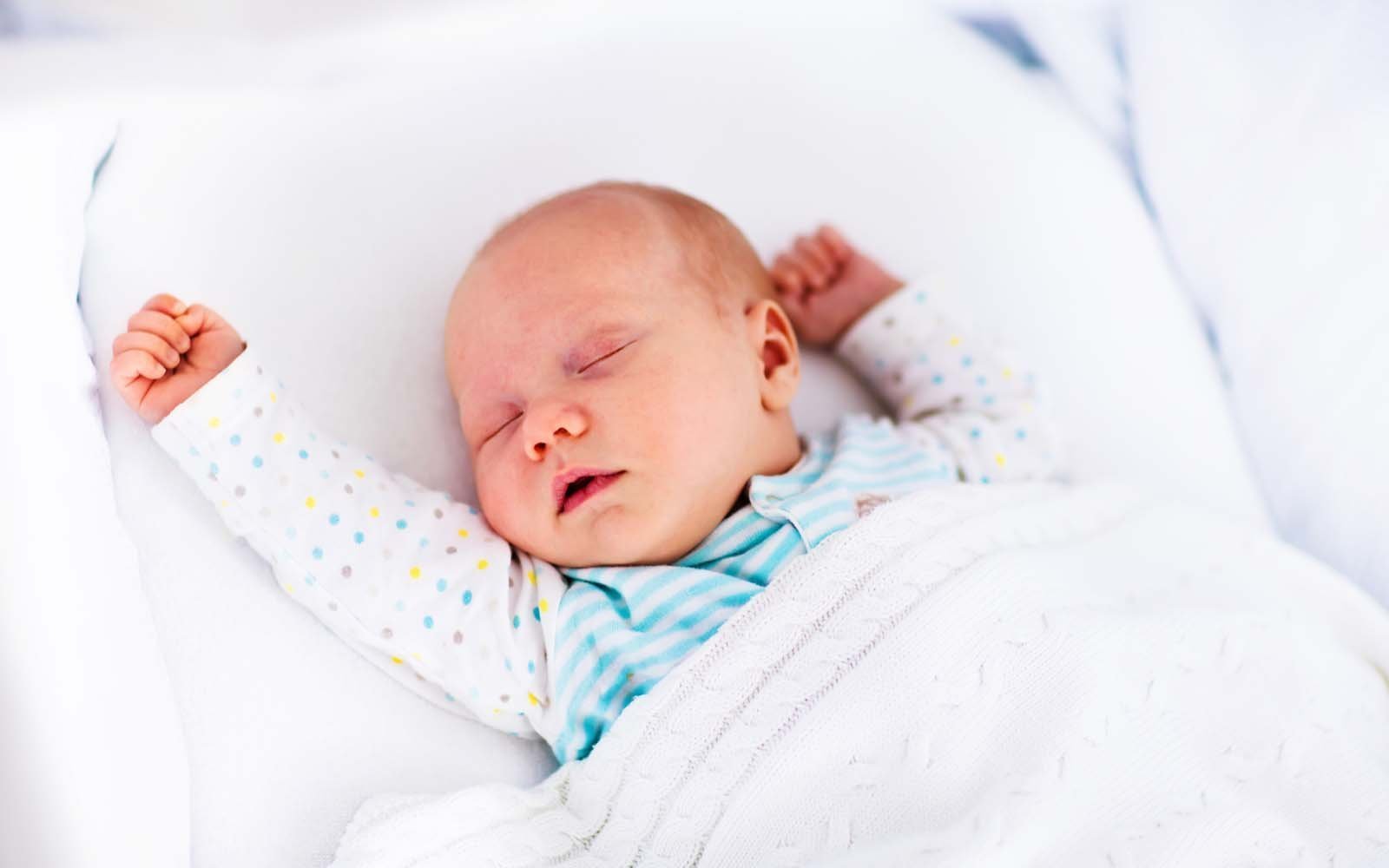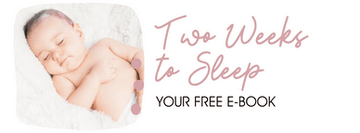
Why sleep training your baby doesn’t always equal good sleep
By Nicky Barker (BA, Grad. Dip Tch, University of Auckland), Pediatric Sleep Science Expert
There is a common misconception that having your baby sleeping well or on a sleep schedule/ program/ routine is the same as "sleep training" and that "sleep training" can only mean a crying, unhappy, abandoned baby.
We want to outline the difference between using the schedules and solutions in our Little Ones App to achieve good sleep and the need for actual "sleep training". We'll also explain when the two can go hand in hand.
In this article:
- How to achieve good sleep without sleep training
- Understanding sleep training
- How self-settling/self-soothing fits into the equation
Get your little one’s sleep back on track.
Get guidance, advice & exclusive support through the sleep regressions, nap transitions and big sleep changes to come.
Choose your Sleep Solution
How to achieve good sleep without sleep training
It is a common misconception that if you want your baby to sleep well, you have to do some form of sleep training, but we’re here to tell you this isn’t the case! Many babies, and especially those under 3-4 months of age, are perfectly capable of achieving good sleep without any formal sleep training.
The secret is knowing the perfect awake windows for your baby's age and allowing your baby to nap at the optimal times and lengths, so they are perfectly ready for sleep. This helps them to fall asleep easily during the day and sleep well at night.
Babies who follow the age-appropriate schedules in our Little Ones App generally won't need proper "sleep training" because they will be given the opportunity to sleep at the best times for their age. They will quickly learn when it's time for sleep and they won’t need as much active settling as an over or under tired baby would.
Our goal has always been to set up great sleep habits right across your baby's day and night time sleep. We never look at your baby's days or nights in isolation. Naps have such a huge impact on your baby's ability to settle and sleep well at night, so it is actually the most important thing to get right before addressing any night waking issues.
Having an established and predictable nap pattern during the day, also means your baby will be at the optimal times, so they won’t wake hungry from naps. Getting plenty of feeds in during the day will also help them to sleep for longer stretches overnight.
Understanding sleep training
When we use the term "sleep training", we mean teaching your baby to go to sleep independently, or "self-settle", without parent-led sleep associations such as being fed, rocked or patted to sleep. Self-settling can be achieved using a variety of methods - you have probably heard of some of the more common ones such as "cry it out", "verbal reassurance" or "pick-up/put-down".
We are not in the business of judging parent's sleep training decisions for their children (nor should you be!) so we have several methods for self-settling available in our Little Ones App, which are tailored to your baby's existing sleep association. This way, you can choose the method that best suits your baby and your parenting style.
Where sleep training gained a lot of negative attention is from methods such as extinction/cry-it-out/Ferber, which we actually don't use. Our methods are as gradual as you can get, allowing you to comfort and soothe your baby throughout the entire process if that is your preference.
Sleep training also gets a bad reputation from people not knowing how or when to implement it. It can be very ineffective to sleep train babies who are not also following an age-appropriate nap pattern during the day.
Many sleep consultants and organisations treat nights separately and don't really focus much on a baby's daytime sleep. This leads to a baby being sleep trained under an umbrella of circumstances that are not ideal. And, of course, this often means that the sleep training fails to improve their sleep, leaving parents feeling quite helpless!
If a baby is not following an age-appropriate nap schedule, it is likely that they are having too much or too little day sleep or napping too early or late in the day and this can massively impact their night sleep. It can also impact their ability to learn to self-settle.
Say goodbye to sleepless nights.
Join over 800,000 families worldwide who are enjoying excellent sleep with our Sleep App, created by experts in the field of pediatric sleep.
Choose your Sleep Solution
Your baby might simply need their daytime naps to be tweaked, rather than needing any actual sleep training. An under or over tired baby will not respond well to being sleep trained in the night. It will result in a crying, distressed baby and frustrated parents. If you are being advised to sleep train your baby overnight, we urge you to get your baby's day sleep lined up FIRST!
How self-settling/self-soothing fits into the equation
Many people believe that babies under 4 months are not capable of "self-settling" because they are basing their definition of "self-settling" on a crying baby being able to calm themselves without parental soothing. This is NOT what we mean by self-settling.
When we talk about self-settling, we simply mean a baby falling asleep when they're ready to, without having to be actively settled to sleep every time. In our experience with the sleep patterns of thousands of babies, we find that younger babies are certainly capable of falling asleep unassisted if everything is aligned to encourage them to fall asleep.
At this age though, self-settling is more of a neurological/instinctual reaction to their biological need to sleep and not a cognitive skill like it is in an older baby. Put simply, a baby this age falls asleep, rather than goes to sleep.
From around 4 months though, your baby can definitely start learning to cognitively put themselves to sleep - especially if they have hit the 4 month sleep regression. This regression signals that your baby’s sleep cycles have matured, so they may start catnapping during the day or waking every 2 hours overnight.
When this regression hits, giving your baby the chance to nap at the best times for their age, as per the schedules in our Little Ones App, is a great place to start. We often see babies start to sleep better after adjusting their nap timings, so there is no need for proper sleep training.
For older babies who have a deeply ingrained sleep association which is causing continued catnapping and/or multiple night waking, some gradual sleep training can be used to guide them towards better sleep. Once they are established in an age-appropriate nap pattern, you can start to wean them off needing as much assistance to fall asleep by following one of the gentle self-settling methods in our Little Ones App.
These days, “sleep training” doesn’t have to mean the traditional regimented methods that have been immortalised in parenting folklore. The key is to look at your baby’s sleepover a 24-hour period and make tweaks and adjustments to help them regulate their daytime sleep hours and consolidate their nights.
Sleep training, in our books, is no longer simply focusing on your baby's night waking in isolation - it is working holistically to guide your baby towards independent sleep when they're good and ready.
__________
Bibliography
Goodlin-Jones, B. L., Burnham, M. M., Gaylor, E. E., & Anders, T. F. (2001). Night Waking, Sleep-Wake Organization, and Self-Soothing in the First Year of Life. Journal of Developmental & Behavioral Pediatrics, 22(4), 226–233. https://doi.org/10.1097/00004703-200108000-00003
Parmelee, A. H., Schulz, H. R., & Disbrow, M. A. (1961). Sleep patterns of the newborn. The Journal of Pediatrics, 58(2), 241–250. https://doi.org/10.1016/s0022-3476(61)80164-9
Paul, I. M., Savage, J. S., Anzman-Frasca, S., Marini, M. E., Mindell, J. A., & Birch, L. L. (2016). INSIGHT Responsive Parenting Intervention and Infant Sleep. Pediatrics, 138(1). https://doi.org/10.1542/peds.2016-0762
___________

Receive product and services updates, promotional offers and other marketing communications based.





